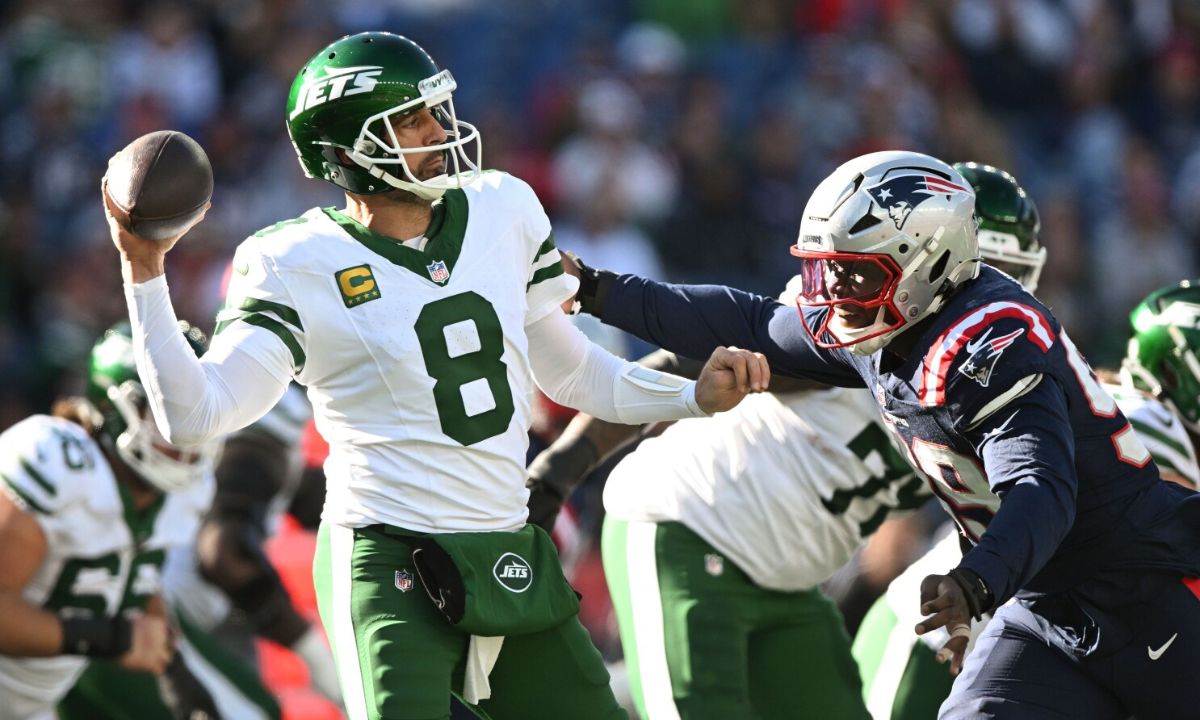Introduction
The Houston Texans vs New York Jets match player stats reveal a compelling battle between two teams with distinct playstyles. While the Texans leaned heavily on their ground game, the Jets found success through the air, capitalizing on their efficient passing attack.
Breaking down the key player performances and team stats offers a clearer picture of how the game unfolded. The Texans’ rushing dominance and the Jets’ passing efficiency were pivotal factors in determining the outcome. This analysis will focus on:
- Quarterback Performance: How CJ Stroud and Aaron Rodgers managed their respective offences.
- Rushing and Receiving Contributions: The impact of key players like Joe Mixon and Garrett Wilson.
- Team Execution and Efficiency: Comparing how each team converted opportunities into points.
By dissecting these crucial aspects, we can understand why the Jets emerged victorious and what the Texans need to improve.
Player Stats Breakdown
Houston Texans
Quarterback: CJ Stroud
Recent Performance Overview
- Completions/Attempts: 122/177
- Completion Percentage: 68.9%
- Passing Yards: 1,385
- Touchdowns/Interceptions: 11/3
- Average Yards per Game: 277.0
- Quarterback Rating: 98.2
Performance vs. Jets
In the Houston Texans vs New York Jets match player stats, CJ Stroud faced one of his toughest challenges against an aggressive Jets defense. He managed only 135 passing yards and failed to record a touchdown, reflecting the difficulty in moving the ball against a strong secondary. The Jets’ defensive pressure limited his options, forcing the Texans to rely more on their running game.
Running Back: Joe Mixon
Recent Performance Overview
- Rushing Attempts: 24
- Rushing Yards: 106
- Rushing Touchdowns: 1
- Fantasy Points: 16
Impact on the Match
Despite the Texans’ struggles in the passing game, Joe Mixon played a crucial role in keeping the offence afloat. His 106 rushing yards contributed significantly to the team’s total of 187 rushing yards, allowing Houston to control time of possession. However, the Texans failed to convert their ground success into sufficient points without a balanced attack.
New York Jets
Quarterback: Aaron Rodgers
Recent Performance Overview
- Completions/Attempts: 22/32
- Passing Yards: 211
- Touchdowns/Interceptions: 3/0
- Fantasy Points: 26
Performance vs. Texans
In contrast to Stroud’s struggles, Aaron Rodgers excelled in the Houston Texans vs New York Jets match player stats with an efficient and calculated performance. He completed 69% of his passes, totalling 211 passing yards with three touchdowns and no interceptions. His ability to spread the ball effectively allowed the Jets to capitalize on scoring opportunities.
Wide Receiver: Garrett Wilson
Recent Performance Overview
- Targets/Receptions: 10/9
- Receiving Yards: 90
- Receiving Touchdowns: 2
- Fantasy Points: 30
Impact on the Match
Garrett Wilson was a game-changer for the Jets, making clutch receptions at crucial moments. His two-touchdown performance shifted momentum in the Jets’ favour and helped separate them from the Texans on the scoreboard. With nine receptions and 90 yards, he became the go-to target for Rodgers, reinforcing the Jets’ dominance in the air.
Team Performance Comparison
| Statistic | Houston Texans | New York Jets |
|---|---|---|
| Total Net Yards | 322 | 293 |
| Rushing Yards | 187 | 100 |
| Passing Yards | 135 | 193 |
| Touchdowns | 1 | 3 |
| Turnovers | 1 | 1 |
| Time of Possession | 33:42 | 26:18 |
| Third Down Conversions | 6/17 | 5/12 |
Key Takeaways from the Team Comparison:
- The Texans dominated rushing yards but struggled to convert those drives into touchdowns.
- Jets’ passing efficiency resulted in a higher touchdown count, securing the win.
- Texans controlled possession (33:42 minutes) but lacked red-zone efficiency.
- The Jets executed better on third downs and capitalized on scoring chances.
Despite the Texans’ superior yardage, their lack of an aerial attack limited their scoring ability, ultimately leading to a Jets victory.
Match Analysis & Key Takeaways
1. Texans’ Game Plan & Performance
The Houston Texans relied heavily on the run game, utilizing Joe Mixon’s rushing ability to control possession. However, this strategy came with setbacks:
- They struggled to establish a passing rhythm as Stroud faced constant defensive pressure.
- They maintained an intense time of possession but couldn’t convert opportunities into touchdowns.
- It became too predictable offensively, allowing the Jets’ defense to adjust and shut down key plays.
2. Jets’ Strategy & Execution
The New York Jets countered with a more balanced approach, focusing on Aaron Rodgers’ passing efficiency and Garrett Wilson’s big-play ability. Their key strengths included:
- Rodgers’ precision and decision-making, avoiding turnovers while delivering three passing touchdowns.
- Wilson’s ability to create separation, providing a reliable target and key red-zone presence.
- Capitalizing on passing plays, exposing weaknesses in the Texans’ secondary and securing crucial third-down conversions.
3. Decisive Factors in the Outcome
Several elements tipped the game in the Jets’ favor:
- The jets’ aerial attack outperformed the Texans’ ground-heavy approach.
- Texans’ struggles in the passing game limited their offensive potential.
- Jets’ defensive pressure on Stroud prevented the Texans from stretching the field.
Even with Houston’s dominance in the rushing game, the Jets’ ability to execute in key passing situations proved to be the deciding factor.
Conclusion
The Houston Texans vs. New York Jets match player stats highlight contrasting strategies. The Texans’ reliance on their run game allowed them to control the clock, but it wasn’t enough to overcome the Jets’ passing efficiency.
- CJ Stroud’s struggles in the air proved costly, as Houston’s offence lacked balance.
- Garrett Wilson and Aaron Rodgers formed an elite duo, creating big plays when needed.
- The Jets’ superior passing execution and red-zone efficiency ultimately sealed their win.
In the future, the Texans must focus on developing their passing game to complement their potent rushing attack. Meanwhile, the Jets can continue to build upon their aerial success, refining their offensive game plan to maintain their competitive edge in future matchups.
ALSO READ: Rayo Vallecano vs CD Leganés Lineups: Predictions and Insights
FAQ
1. What was the key difference in the Houston Texans vs New York Jets match?
The Jets’ passing efficiency gave them the edge, with Aaron Rodgers and Garrett Wilson making key plays, while the Texans struggled in the air despite a strong rushing game.
2. How did CJ Stroud perform against the Jets?
Stroud struggled against the Jets’ defense, managing only 135 passing yards and no touchdowns, limiting the Texans’ offensive impact.
3. Who was the standout player for the New York Jets?
Garrett Wilson played a crucial role with nine receptions, 90 yards, and two touchdowns, helping secure the Jets’ win.
4. Why did the Texans lose despite dominating in rushing yards?
While they controlled possession with 187 rushing yards, their lack of passing efficiency prevented them from converting drives into touchdowns.
5. What do the Texans need to improve moving forward?
The Texans must enhance their passing game to complement their rushing attack, making their offence less predictable in future matchups.





